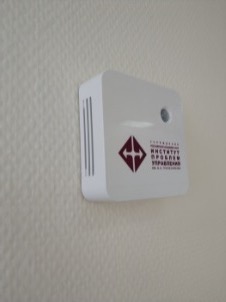
Current situation: Implementation of the IoT concept is impossible without establishing reliable communication channels between the measurement and/or control periphery (sensors, controls) and application servers.
Among the variety of types of connected peripheral devices in a special class are wireless stand-alone devices, the distinctive features of which are battery power and connection to the higher infrastructure by means of energy-efficient networks of long range (low power wide area network, LPWAN).

Typical disadvantages of this type of devices are their limited battery life and low bandwidth to the server. Today, these drawbacks are a significant obstacle to the deployment of large-scale networks involving a large number of such devices, as well as intensive data collection, often necessary to identify the behavior of the observed systems.
Specificity of autonomous LPWAN devices requires non-standard approaches to the problem of increasing the bandwidth capacity of communication channels. In particular, battery power supply of peripherals excludes application of computationally difficult algorithms of compression of the useful information on their party. Besides, the data compression algorithms, which are based on compression on the end device side, introduce a significant delay. It is not allowed for many IoT applications. In this connection, solving the problem requires alternative approaches, in particular, based on the concept of distributed calculations.
Project objectives: Development of distributed algorithms for compression of information transmitted from peripheral devices to the server with a high compression ratio and low computational complexity on their side, as well as not causing significant time delays in data acquisition.
Approaches and methods of research: digital signal processing, linear signal prediction, intelligent processing, distributed computing, peripheral computing.
Prospects: Algorithms of effective compression of information transmitted by wireless standalone devices will increase the total number of sensors and control devices connected to the network, as well as provide intensive data exchange in applications that require active exchange and management in real time.